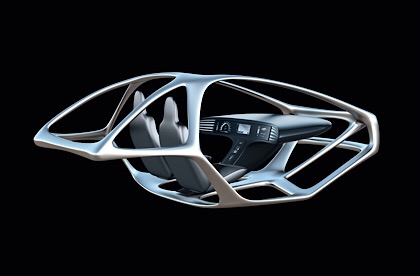 At FAKUMA, material innovations for sustainable mobility will be exhibited widely. One of the company’s which will exhibit such materials is LANXESS. These materials will have the characteristics like: Economical alternatives to polyamide 66 compounds; New polyamides with high cyclic fatigue strength; New compounds for laser transmission welding; New developments in halogen-free flame-retardant polyesters and polyamides.
At FAKUMA, material innovations for sustainable mobility will be exhibited widely. One of the company’s which will exhibit such materials is LANXESS. These materials will have the characteristics like: Economical alternatives to polyamide 66 compounds; New polyamides with high cyclic fatigue strength; New compounds for laser transmission welding; New developments in halogen-free flame-retardant polyesters and polyamides.
Polyamide 6 compounds instead of polyamide 66 compounds
LANXESS will be presenting its new Durethan Performance product range for the first time at Fakuma. The polyamide 6 material grades are several times more resistant to fatigue under pulsating loads than standard products with the same glass fiber content. “Among other things, they meet the increasing requirements for dynamic long-term durability of plastic engine compartment parts,” Bender explains. In addition, it was possible to improve their static mechanical properties, such as tensile strength at higher temperatures. Potential applications include air-intake systems and oil-filter modules and parking brakes, but also furniture-locking systems and housings for power tools. Due to their improved mechanical properties, the new products are suitable in many cases when it comes to substituting expensive polyamide 66 compounds with the same glass fiber content.
High transparency in the near-infrared wavelength range
LANXESS has developed new polyamide 6, polyamide 66, and PBT compounds especially for complex formed components that are manufactured in series by laser transmission welding. They have a high level of transparency with laser light from the near-infrared range, which is used in this joining process. “With these products, we are responding to the growing demand for housings for sensors, control units, and display systems, which are needed for applications ranging from driver assistance systems to autonomous driving,” explains Bender. One new product is the halogen-free flame-retardant Durethan AKV30FN04LT. The laser-light-transparent polyamide 66 achieves the best classification of V-0 (0.4 millimeters) in flammability testing pursuant to the United States’ UL 94 (Underwriter Laboratories Inc.) standard.
Flame-retardant compounds make electric vehicles safer
The numerous electric and electronic components as well as the high battery voltages in electrified vehicles increase the risk of fire in the event of technical defects. Plastics with a V-0 classification in the UL 94 test are increasingly in demand for such applications. LANXESS has developed a broad range of halogen-free flame-retardant polyamides and polyesters that meet this requirement and offer further advantages, such as high long-term thermal resistance, tracking resistance, or low corrosion tendency in contact with live components. At Fakuma, for example, the company will be presenting a glass fiber reinforced PBT compound that achieves excellent results in glow wire tests on finished components (GWEPT, glow wire flammability test for end products, IEC 60695-2-11). It is also suitable for applications in unattended household appliances according to IEC 60335-1 (“no flame”).
Substituting polyamide 66 compounds with PBT compounds
Another product highlight in halogen-free flame-retardant PBT is the unreinforced Pocan BFN2502. It exhibits a high elongation at break of more than seven percent, and is particularly suitable for components that must be dimensionally stable and permanently electrically insulating. It is suitable for substituting unreinforced polyamide 66 compounds with halogen-containing flame-retardant packages – not only for economic reasons, but also, for example, if the water absorption of polyamide in the component causes problems with dimensional stability.
Polyamides for air ducts of supercharged engines
Another focus of LANXESS’s work is on newer material developments for blow-moldable polyamides for air ducts in supercharged engines. The latter have become a trend because of their higher efficiency. “We have a wide range of products that meet common requirements for charge air pipes and clean air lines, and are easy to process in large series with high surface qualities,” says Bender. This applies, for example, to polyamide 66
Durethan AKV320ZH2.0 and polyamide 6 Durethan BKV320ZH2.0, which are primarily designed for 3D suction blow molding, for example, of air ducts. The range also includes very soft, super-tough polyamide 6 materials with an e-modulus of only 210 megapascals (conditioned). They can be used to produce charge air pipes with integrated flexible bellows as a single-material solution by extrusion blow molding.
LANXESS will exhibit at Fakuma, October 16 – 20, 2018, Messe Friedrichshafen, hall B4, booth 4209
************************
Why Should Be “A Paid-Subscriber”?
Keeping an independent media in countries that impose limitations on self supporting media, will help to support the humankind’s freedom. If you believe it, please act to be a PRO-MEMBER by clicking “HERE“, or:
Please send your PR’s directly to my email address to be published in the world via ” http://pimi.ir ” my address is: aasaatnia@live.com













